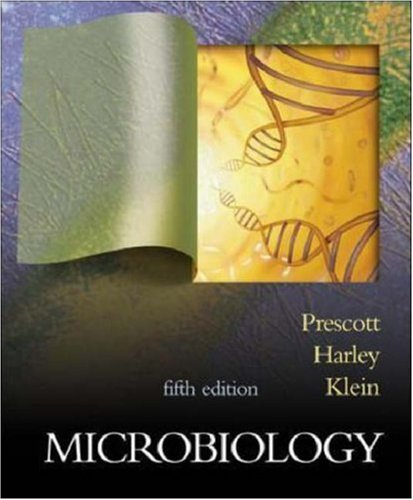كتاب Pharmaceutical microbiology
PREFACE The textbook of ‘Pharmaceutical Microbiology’ specifically aims at the ever demanding thoughtful need of an absolutely well-documented compilation of factual details related to : theoritical principles, classifications, diagramatic profiles, graphic presentations, critical explanation, latest examples for the Pharmacy Degree (B. Pharm.,) throughout the Indian Universities, SAARC-countries, and similar curricula adopted abroad. Modern invigorative society, based on the overwhelming and overemphasized broad-spectrum importance vis-a-vis utilities of ‘Microbiology’ profusely gets benefited from the intricate species of scores of microorganisms in several ways and means, namely : antibiotics, vaccines, enzymes, vitamins etc. Nevertheless, a quantum-leap-forward in the field of ‘Modern Biotechnology’ rests predominantly upon reasonably sound microbiological foundation. Besides, microorganisms do modulate a plethora of vital and critical functionalities, such as : ( a ) enable completion of cycles of C, O, N and S which essentially occur in both terrestrial and aquatic systems ; ( b ) provide absolutely indispensable components of prevailing ecosystem ; and ( c ) serve as a critical source of ‘nutrients’ occurring at the grass-root of practically a large segment of ecological food webs and chains. The entire course-content presented in ‘Pharmaceutical Microbiology’ has been meticulously and painstakingly developed and expanded as per the AICTE-Approved Syllabus–2000. Each chapter has been duly expatiated in a simple, lucid, and crisp language easily comprehensible by its august readers. A unique largely acceptable style of presentation has been adopted, viz., brief introduction, principles, labeled figures, graphics, diagrams of equipments, descriptions, explanations, pharmaceutical applications, and selected classical examples. Each chapter is duly elaborated with adequate foot-notes, references, and ‘further reading references’ at the end. An exhaustive ‘Glossary of Important Microbiological Terminologies’ has been duly annexed at the end of the textbook. A fairly up to date computer-generated ‘Index’ in the textbook will surely enlarge the vision of its readers in gaining an easy access of subject enriched well documented text materials. Pharmaceutical Microbiology consists of Ten Chapters : (1) Introduction and Scope ; (2) Structure and Function : Bacterial Cells ; (3) Characterization, Classification and Taxonomy of Microbes ; (4) Identification of Microorganisms ; (5) Nutrition, Cultivation and Isolation : Bacteria- Actinomycetes-Fungi-Viruses ; (6) Microbial Genetics and Variations ; (7) Microbial Control by Physical and Chemical Methods ; (8) Sterility Testing : Pharmaceutical Products ; (9) Immune Systems ; and (10) Mi crobiological (Microbial) Assays : Antibiotics–Vitamins–Amino Acids. The text material essentially embodies not only an ample emphasis on the vivid coverage of fundamental principles of microbiology as a scientific discipline but also maintains a manageable length for the apprehension of brilliant students. CONTENTS 1. Introduction and Scope ... 1 1.1 Introduction ... 1 1.2 Historical Development of Microbiology ... 3 1.2.1. The Microscope ... 3 1.2.2. Spontaneous Generation Vs Biogenesis ... 4 1.2.3. Fermentation ... 6 1.2.4. Germ Theory ... 6 1.2.5. Classical Laboratory Methods and Pure Cultures ... 7 1.2.6. Immunity ... 8 1.2.7. Medical Microbiology ... 9 1.2.8. Pharmaceutical Microbiology ... 10 1.2.9. Industrial Microbiology ... 14 1.2.10. Emergence of Molecular Biology ... 15 1.2.11. Emergence of Virology ... 17 1.2.12. Microorganisms as Geochemical Agents ... 19 1.2.13. Microbiology in the New Millennium ... 19. 2. Structure and Function : Bacterial Cells ... 23 2.1 Introduction ... 23 2.2 Characteristic Features ... 23 2.2.1. Shape ... 23 2.2.2. Size ... 23 2.2.3. Reproduction ... 24 2.2.4. Formation of Colony ... 24 2.2.5. Mutation ... 24 2.2.6. Motility ... 24 2.2.7. Food and Oxygen Requirements ... 24 2.2.8. Temperature Requirements ... 24 2.3 Activities ... 25 2.4 Organization of Microbial Cells ... 25 2.4.1. Type of Cells ... 26 2.4.1.1. Eukaryotic Cells ... 27 2.4.1.2. Prokaryotic Cells ... 33 2.5 Archaeobacteria and Eubacteria ... 37 2.5.1. Methanogenic Bacteria [Methanogens] ... 38 2.5.2. Extreme Halophiles ... 40 ( ix ) 2.5.3. Thermoacidophiles ... 41 2.5.3.1. Thermoplasma ... 41 2.5.3.2. Sulfolobus ... 41 2.6 The Bacterial Cells ... 42 2.6.1. Typical Bacterial Cells ... 43 2.6.2. Capsules and Slimes ... 44 2.6.3. Flagella and Fimbria ... 46 2.6.3.1. Flagella ... 46 2.6.3.2. Fimbria [or Pili] ... 48 2.6.4. Cell Envelope ... 49 2.6.5. Gram-Positive and Gram-Negative Bacteria ... 51 2.6.6. Significance of Teichoic Acids ... 53 2.6.7. The Cell Membrane ... 54 2.6.8. Bacterial Cytoplasm ... 55 2.6.9. Ribosomes ... 57 2.6.10. Cellular Reserve Materials ... 58 3. Characterization, Classification and Taxonomy of Microbes ... 62 3.1 Introduction ... 62 3.2 Characterization ... 62 3.2.1. Morphological Characteristics ... 63 3.2.2. Chemical Characteristics ... 64 3.2.3. Cultural Characteristics ... 64 3.2.4. Metabolic Characteristics ... 66 3.2.5. Antigenic Characteristics ... 66 3.2.6. Genetic Characteristics ... 67 3.2.6.1. DNA Base Composition ... 67 3.2.6.2. Sequence of Nucleotide Bases in DNA ... 68 3.2.7. Pathogenecity ... 69 3.2.8. Ecological Characteristics ... 69 3.3 Classificiation ... 70 3.3.1. Difficulties Encountered in Classification of Microorganisms ... 70 3.3.2. Objectives of Classification ... 70 3.3.3. Genetic Methods of Classifying Microbes ... 71 3.3.3.1. Genetic Relatedness ... 71 3.3.3.2. The Intuitive Method ... 72 3.3.3.3. Numerical Taxonomy ... 72 3.3.4. Systemetized Classification ... 75 3.3.4.1. Natural Classification ... 75 3.3.4.2. Phyletic Calssification ... 75 ( x ) 3.3.4.3. Linnear Binomial Scheme ... 76 3.3.4.4. Phenotypic Classification ... 77 3.3.4.5. Microscopic Examination ... 79 3.3.4.6. Cataloguing rRNA ... 80 3.3.4.7. Computer Aided Classification ... 81 3.3.4.8. Bacterial Classification ... 82 3.4 Taxonomy ... 87 3.5 The Kingdom Prokaryotae ... 88 3.5.1. Actinomyctes ... 89 3.5.1.1. General Characteristics ... 89 3.5.1.2. Significance of Actinomycetes ... 90 3.5.1.3. Classification ... 91 3.5.1.3.1. Whole Cell Carbohydrate Patterns of Aerobic Actinomycetes ... 91 3.5.1.3.2. Major Constituents of Cell Wall Types of Actinomycetes ... 91 3.5.1.3.3. Groups of Actinomycetes Based on Whole Cell Carbohydrate Pattern and Cell Wall Type ... 92 3.5.1.3.4. Actinomycetes with Multiocular Sporangia ... 92 3.5.1.4. Actinomycetes and Related Organisms ... 93 3.5.1.4.1. Group ... 93 3.5.1.4.2. Genus ... 94 3.5.1.4.3. Order ... 97 3.5.1.4.4. Family ... 98 3.5.2. Bacteria ... 102 3.5.2.1. Salient Features ... 103 3.5.2.2. Structure and Form of the Bacterial Cell ... 104 3.5.2.2.1. Size and Shape ... 105 3.5.2.2.2. Structure ... 105 3.5.3. Rickettsia and Coxiella ... 107 3.5.4. Spirochaetes ... 108 4. Identification of Microorganisms ... 112 4.1 Introduction ... 112 4.2 Morphology ... 113 4.3 Selective and Diagnostic Media ... 113 4.3.1. Differential Media ... 116 4.3.1.1. Eosin Methylene Blue Agar [EMB-Agar] ... 116 ( xi ) 4.3.1.2. MacConkey Agar ... 116 4.3.1.3. Hektoen Enteric Agar [HE-Agar] ... 116 4.3.2. Enrichment Media ... 116 4.3.2.1. Blood Agar ... 116 4.3.2.2. Chocolate Agar ... 117 4.3.3. Characteristic Media ... 117 4.3.3.1. Triple Sugar Iron Agar [TSI-Agar] ... 117 4.4 Cultural Characteristics ... 119 4.5 Biochemical Tests (or Properties) ... 120 4.5.1. Carbohydrate (Sugar) Fermentation ... 120 4.5.2. Litmus Milk ... 120 4.5.3. Indole Production ... 120 4.5.4. Methyl Red Test [MR-Test] ... 121 4.5.5. Voges-Proskauer Test [VP-Test] ... 121 4.5.6. Citrate Utilization ... 121 4.5.7. Nitrate Reduction ... 122 4.5.8. Ammonia Production ... 122 4.5.9. Urease Test ... 122 4.5.10. Production of Hydrogen Sulphide ... 123 4.5.11. Reduction of Methylene Blue ... 123 4.5.12. Production of Catalase [Tube Catalase Test] ... 123 4.5.13. Oxidase Reaction ... 123 4.5.14. Egg-Yolk Reaction ... 124 4.5.15. Growth in Presence of Potassium Cyanide ... 124 4.5.16. Composite Media ... 124 4.6 Profile of Microbial Stains ... 127 4.6.1. Preparation of Bacterial Specimens for Light Microscopy ... 128 4.6.1.1. Standard Preparations ... 128 4.6.1.2. Preparation of Smears for Staining ... 128 4.6.1.3. Gram Staining ... 129 4.6.1.4. Differential Staining ... 131 4.6.1.4.1. Gram’s Stain ... 131 4.6.1.4.2. Acid-Fast Stain ... 131 4.6.1.5. Miscellaneous Staining ... 131 4.6.1.5.1. Capsule Staining ... 132 4.6.1.5.2. Endospore Staining ... 132 4.6.1.5.3. Flagella Staining ... 133 ( xii ) 4.6.2. Microscopy : The Differential Instruments ... 133 4.6.2.1. Concepts ... 133 4.6.2.2. Microscope Variants ... 134 4.6.2.2.1. Bright-Field Microscope ... 134 4.6.2.2.2. Dark-Field Microscope ... 136 4.6.2.2.3. Phase-Contrast Microscope ... 136 4.6.2.2.4. Differential Interference Contrast (DIC) Microscope ... 139 4.6.2.2.5. Fluorescence Microscope ... 139 4.6.2.2.6. Electron Microscope ... 141 4.6.2.2.6.1. Transmission Electron Microscope (TEM) ... 142 4.6.2.2.6.2. Scanning Electron Microscope (SEM) ... 143 5. Nutrition, Cultivation and Isolation : Bacteria-Actinomycetes-Fungi-Viruses ... 146 5.1 Introduction ... 146 5.2 Bacteria ... 146 5.2.1. Nutrition of Microorganisms ... 146 5.2.2. Cultivation of Bacteria ... 147 5.2.2.1. Binary Fission ... 148 5.2.2.2. Normal Growth Curve of Microorganisms ... 149 5.2.2.3. The Lag Phase of Microbial Growth ... 150 5.2.2.4. Translational Periods Between Various Growth Phases ... 150 5.2.2.5. Synchronous Growth ... 151 5.2.2.6. Effect of Nutritional Concentration Vs Growth Rate of Bacterial Culture ... 152 5.2.2.7. Growth Determining Techniques ... 152 5.2.3. Isolation of Bacteria ... 154 5.2.3.1. Selective and Diagnostic Media ... 154 5.2.3.2. Bismuth Sulphate Agar ... 154 5.2.3.3. Selective Media for Staphylococci ... 155 5.3 Actinomycetes ... 155 5.4 Fungi ... 156 5.4.1. Reproduction of Fungi ... 158 5.4.1.1. Asexual Reproduction ... 158 5.4.1.2. Sexual Reproduction ... 159 5.4.2. Industrial Importance of Fung Methods and specifications Testing of pharmaceutical products is carried out according to a Pharmacopeia of which there are a few types. For example: In America, the United States Pharmacopeia is used; in Japan there is the Japanese Pharmacopeia; in the United Kingdom there is the British Pharmacopoeia and in Europe the European Pharmacopeia. These contain a test method which is to be followed when testing, along with defined specifications for the amount of microorganisms allowed in a given amount of product. The specifications change depending on the product type and method in which it is introduced to the body. The pharmacopoeia also covers areas like sterility testing, endotoxin testing, the use of biological indicators, microbial limits testing and enumeration, and the testing of pharmaceutical grade water.-
من كتب علمية - مكتبة الكتب العلمية.

قراءة كتاب Pharmaceutical microbiology أونلاين
معلومات عن كتاب Pharmaceutical microbiology:
PREFACE
The textbook of
‘Pharmaceutical Microbiology’
specifically aims at the ever demanding
thoughtful need of an absolutely well-documented compilation of factual details related to : theoritical
principles, classifications, diagramatic profiles, graphic presentations, critical explanation, latest examples
for the Pharmacy Degree (B. Pharm.,) throughout the Indian Universities, SAARC-countries, and similar
curricula adopted abroad.
Modern invigorative society, based on the overwhelming and overemphasized broad-spectrum
importance
vis-a-vis
utilities of
‘Microbiology’
profusely gets benefited from the intricate species of
scores of microorganisms in several ways and means, namely :
antibiotics, vaccines, enzymes, vitamins
etc. Nevertheless, a quantum-leap-forward in the field of
‘Modern Biotechnology’
rests predominantly
upon reasonably sound
microbiological foundation.
Besides, microorganisms do modulate a plethora
of vital and critical functionalities, such as : (
a
) enable completion of cycles of C, O, N and S which
essentially occur in both
terrestrial and aquatic systems ;
(
b
) provide absolutely indispensable
components of prevailing
ecosystem ;
and (
c
) serve as a critical source of
‘nutrients’
occurring at the
grass-root of practically a large segment of
ecological food webs and chains.
The entire course-content presented in
‘Pharmaceutical Microbiology’
has been meticulously
and painstakingly developed and expanded as per the
AICTE-Approved Syllabus–2000.
Each chapter
has been duly expatiated in a simple, lucid, and crisp language easily comprehensible by its august
readers. A unique largely acceptable style of presentation has been adopted,
viz.,
brief introduction,
principles, labeled figures, graphics, diagrams of equipments, descriptions, explanations, pharmaceutical
applications, and selected classical examples. Each chapter is duly elaborated with adequate foot-notes,
references, and ‘further reading references’ at the end.
An exhaustive
‘Glossary of Important Microbiological Terminologies’
has been duly annexed
at the end of the textbook. A fairly up to date computer-generated
‘Index’
in the textbook will surely
enlarge the vision of its readers in gaining an easy access of subject enriched well documented text
materials.
Pharmaceutical Microbiology
consists of
Ten Chapters :
(1) Introduction and Scope ;
(2) Structure
and Function : Bacterial Cells ; (3) Characterization, Classification and Taxonomy of
Microbes ; (4) Identification of Microorganisms ; (5) Nutrition, Cultivation and Isolation : Bacteria-
Actinomycetes-Fungi-Viruses ; (6) Microbial Genetics and Variations ; (7) Microbial Control by Physical
and Chemical Methods ; (8) Sterility Testing : Pharmaceutical Products ; (9) Immune Systems ; and
(10) Mi
crobiological (Microbial) Assays : Antibiotics–Vitamins–Amino Acids.
The text material essentially embodies not only an ample emphasis on the vivid coverage of
fundamental principles of microbiology as a scientific discipline but also maintains a manageable length
for the apprehension of brilliant students.
CONTENTS
1. Introduction and Scope
...
1
1.1 Introduction
...
1
1.2 Historical Development of Microbiology
...
3
1.2.1. The Microscope
...
3
1.2.2.
Spontaneous Generation
Vs
Biogenesis
...
4
1.2.3. Fermentation
...
6
1.2.4. Germ Theory
...
6
1.2.5. Classical Laboratory Methods and Pure Cultures
...
7
1.2.6.
Immunity
...
8
1.2.7. Medical Microbiology
...
9
1.2.8. Pharmaceutical Microbiology
...
10
1.2.9. Industrial Microbiology
...
14
1.2.10. Emergence of Molecular Biology
...
15
1.2.11. Emergence of Virology
...
17
1.2.12.
Microorganisms as Geochemical Agents
...
19
1.2.13. Microbiology in the New Millennium
...
19.
2. Structure and Function : Bacterial Cells
...
23
2.1 Introduction
...
23
2.2 Characteristic Features
...
23
2.2.1. Shape
...
23
2.2.2. Size
...
23
2.2.3. Reproduction
...
24
2.2.4. Formation of Colony
...
24
2.2.5. Mutation
...
24
2.2.6.
Motility
...
24
2.2.7. Food and Oxygen Requirements
...
24
2.2.8. Temperature Requirements
...
24
2.3 Activities
...
25
2.4 Organization of Microbial Cells
...
25
2.4.1. Type of Cells
...
26
2.4.1.1. Eukaryotic Cells
...
27
2.4.1.2. Prokaryotic Cells
...
33
2.5 Archaeobacteria and Eubacteria
...
37
2.5.1. Methanogenic
Bacteria [Methanogens]
...
38
2.5.2. Extreme Halophiles
...
40
(
ix
)
2.5.3. Thermoacidophiles
...
41
2.5.3.1. Thermoplasma
...
41
2.5.3.2. Sulfolobus
...
41
2.6 The Bacterial Cells
...
42
2.6.1. Typical Bacterial Cells
...
43
2.6.2. Capsules and Slimes
...
44
2.6.3. Flagella and Fimbria
...
46
2.6.3.1. Flagella
...
46
2.6.3.2. Fimbria [or Pili]
...
48
2.6.4. Cell Envelope
...
49
2.6.5. Gram-Positive and Gram-Negative Bacteria
...
51
2.6.6. Significance of Teichoic Acids
...
53
2.6.7. The Cell Membrane
...
54
2.6.8. Bacterial Cytoplasm
...
55
2.6.9. Ribosomes
...
57
2.6.10. Cellular Reserve Materials
...
58
3. Characterization, Classification and Taxonomy of Microbes
...
62
3.1 Introduction
...
62
3.2 Characterization
...
62
3.2.1. Morphological Characteristics
...
63
3.2.2. Chemical
Characteristics
...
64
3.2.3. Cultural Characteristics
...
64
3.2.4. Metabolic Characteristics
...
66
3.2.5. Antigenic Characteristics
...
66
3.2.6. Genetic Characteristics
...
67
3.2.6.1. DNA Base Composition
...
67
3.2.6.2. Sequence of Nucleotide Bases in DNA
...
68
3.2.7. Pathogenecity
...
69
3.2.8. Ecological Characteristics
...
69
3.3 Classificiation
...
70
3.3.1. Difficulties Encountered
in Classification of Microorganisms
...
70
3.3.2. Objectives of Classification
...
70
3.3.3. Genetic Methods of
Classifying Microbes
...
71
3.3.3.1. Genetic Relatedness
...
71
3.3.3.2. The Intuitive Method
...
72
3.3.3.3. Numerical Taxonomy
...
72
3.3.4. Systemetized Classification
...
75
3.3.4.1. Natural Classification
...
75
3.3.4.2. Phyletic Calssification
...
75
(
x
)
3.3.4.3. Linnear Binomial Scheme
...
76
3.3.4.4. Phenotypic Classification
...
77
3.3.4.5. Microscopic Examination
...
79
3.3.4.6. Cataloguing rRNA
...
80
3.3.4.7. Computer Aided Classification
...
81
3.3.4.8. Bacterial Classification
...
82
3.4 Taxonomy
...
87
3.5 The Kingdom Prokaryotae
...
88
3.5.1. Actinomyctes
...
89
3.5.1.1. General Characteristics
...
89
3.5.1.2. Significance of Actinomycetes
...
90
3.5.1.3. Classification
...
91
3.5.1.3.1. Whole Cell Carbohydrate Patterns of Aerobic
Actinomycetes
...
91
3.5.1.3.2. Major Constituents of Cell Wall Types of
Actinomycetes
...
91
3.5.1.3.3. Groups of Actinomycetes Based on Whole
Cell Carbohydrate Pattern and Cell
Wall Type
...
92
3.5.1.3.4. Actinomycetes with Multiocular Sporangia
...
92
3.5.1.4. Actinomycetes and Related Organisms
...
93
3.5.1.4.1. Group
...
93
3.5.1.4.2. Genus
...
94
3.5.1.4.3. Order
...
97
3.5.1.4.4. Family
...
98
3.5.2. Bacteria
...
102
3.5.2.1. Salient Features
...
103
3.5.2.2. Structure and Form of the Bacterial Cell
...
104
3.5.2.2.1. Size and Shape
...
105
3.5.2.2.2. Structure
...
105
3.5.3. Rickettsia and Coxiella
...
107
3.5.4. Spirochaetes
...
108
4. Identification of Microorganisms
...
112
4.1 Introduction
...
112
4.2 Morphology
...
113
4.3 Selective and Diagnostic Media
...
113
4.3.1. Differential
Media
...
116
4.3.1.1. Eosin Methylene Blue Agar [EMB-Agar]
...
116
(
xi
)
4.3.1.2. MacConkey Agar
...
116
4.3.1.3. Hektoen Enteric Agar [HE-Agar]
...
116
4.3.2. Enrichment Media
...
116
4.3.2.1. Blood Agar
...
116
4.3.2.2. Chocolate Agar
...
117
4.3.3. Characteristic Media
...
117
4.3.3.1. Triple Sugar Iron Agar [TSI-Agar]
...
117
4.4 Cultural Characteristics
...
119
4.5 Biochemical Tests (or Properties)
...
120
4.5.1. Carbohydrate (Sugar) Fermentation
...
120
4.5.2. Litmus
Milk
...
120
4.5.3. Indole Production
...
120
4.5.4. Methyl
Red Test [MR-Test]
...
121
4.5.5. Voges-Proskauer Test [VP-Test]
...
121
4.5.6. Citrate Utilization
...
121
4.5.7. Nitrate Reduction
...
122
4.5.8. Ammonia Production
...
122
4.5.9. Urease Test
...
122
4.5.10. Production of Hydrogen Sulphide
...
123
4.5.11. Reduction of Methylene Blue
...
123
4.5.12. Production
of Catalase [Tube Catalase Test]
...
123
4.5.13. Oxidase Reaction
...
123
4.5.14.
Egg-Yolk Reaction
...
124
4.5.15. Growth in Presence of Potassium Cyanide
...
124
4.5.16. Composite Media
...
124
4.6 Profile of Microbial Stains
...
127
4.6.1. Preparation of Bacterial Specimens for Light Microscopy
...
128
4.6.1.1. Standard Preparations
...
128
4.6.1.2. Preparation of Smears for Staining
...
128
4.6.1.3. Gram Staining
...
129
4.6.1.4. Differential Staining
...
131
4.6.1.4.1. Gram’s Stain
...
131
4.6.1.4.2. Acid-Fast Stain
...
131
4.6.1.5. Miscellaneous Staining
...
131
4.6.1.5.1. Capsule Staining
...
132
4.6.1.5.2. Endospore Staining
...
132
4.6.1.5.3. Flagella Staining
...
133
(
xii
)
4.6.2. Microscopy : The Differential Instruments
...
133
4.6.2.1. Concepts
...
133
4.6.2.2. Microscope Variants
...
134
4.6.2.2.1. Bright-Field Microscope
...
134
4.6.2.2.2. Dark-Field Microscope
...
136
4.6.2.2.3. Phase-Contrast Microscope
...
136
4.6.2.2.4. Differential Interference Contrast
(DIC) Microscope
...
139
4.6.2.2.5. Fluorescence Microscope
...
139
4.6.2.2.6. Electron Microscope
...
141
4.6.2.2.6.1. Transmission Electron
Microscope (TEM)
...
142
4.6.2.2.6.2. Scanning Electron
Microscope (SEM)
...
143
5. Nutrition, Cultivation and Isolation : Bacteria-Actinomycetes-Fungi-Viruses
...
146
5.1 Introduction
...
146
5.2 Bacteria
...
146
5.2.1. Nutrition of Microorganisms
...
146
5.2.2. Cultivation of Bacteria
...
147
5.2.2.1. Binary Fission
...
148
5.2.2.2. Normal Growth Curve of Microorganisms
...
149
5.2.2.3. The Lag Phase of Microbial Growth
...
150
5.2.2.4. Translational Periods Between Various Growth Phases
...
150
5.2.2.5. Synchronous Growth
...
151
5.2.2.6. Effect of Nutritional Concentration
Vs
Growth Rate of
Bacterial Culture
...
152
5.2.2.7. Growth Determining Techniques
...
152
5.2.3. Isolation of Bacteria
...
154
5.2.3.1. Selective and Diagnostic Media
...
154
5.2.3.2. Bismuth Sulphate Agar
...
154
5.2.3.3. Selective Media for Staphylococci
...
155
5.3 Actinomycetes
...
155
5.4 Fungi
...
156
5.4.1. Reproduction of Fungi
...
158
5.4.1.1. Asexual Reproduction
...
158
5.4.1.2. Sexual Reproduction
...
159
5.4.2. Industrial Importance of Fung
Methods and specifications
Testing of pharmaceutical products is carried out according to a Pharmacopeia of which there are a few types. For example: In America, the United States Pharmacopeia is used; in Japan there is the Japanese Pharmacopeia; in the United Kingdom there is the British Pharmacopoeia and in Europe the European Pharmacopeia. These contain a test method which is to be followed when testing, along with defined specifications for the amount of microorganisms allowed in a given amount of product.
The specifications change depending on the product type and method in which it is introduced to the body. The pharmacopoeia also covers areas like sterility testing, endotoxin testing, the use of biological indicators, microbial limits testing and enumeration, and the testing of pharmaceutical grade water.
عدد مرات التحميل : 29049 مرّة / مرات.
تم اضافته في : الجمعة , 25 مارس 2016م.
حجم الكتاب عند التحميل : 4.2 ميجا بايت .
تعليقات ومناقشات حول الكتاب:
Contents
Contributors, vii
Preface to the Sixth Edition, ix
Preface to the First Edition, x
Part 1 Biology of Microorganisms
1 Bacteria, 3
W. B. Hugo
2 Yeasts and moulds, 35
J. R. Dickinson
3 Viruses, 53
D. J. Stickler
4 Principles of microbial pathogenicity and epidemiology, 75
P. Gilbert
Part 2 Antimicrobial Agents
5 Types of antibiotics and synthetic antimicrobial agents, 91
A. D. Russell
6 Clinical uses of antimicrobial drugs, 130
R. G. Finch
7 Manufacture of antibiotics, 149
S. A. Varian
8 Mechanisms of action of antibiotics, 162
P. A. Lambert
9 Bacterial resistance to antibiotics, 181
E. G. M. Power
10 Chemical disinfectants, antiseptics and preservatives, 201
E. M. Scott &S.P. Gorman
11 Evaluation of non-antibiotic antimicrobial agents, 229
W. B. Hugo & A. D. Russell
12 Mode of action of non-antibiotic antibacterial agents, 256
W. B. Hugo
13 Resistance to non-antibiotic antimicrobial agents, 263
A. D. Russell
14 Fundamentals of immunology, 278
J. R. Furr
15 The manufacture and quality control of immunological products, 304
F W. Sheffield
16 Vaccination and immunization, 321
P. Gilbert & D. G. Allison
Part 3 Microbial Aspects of Pharmaceutical Processing
17 Ecology of microorganisms as it affects the pharmaceutical industry, 339
E. Underwood
18 Microbial spoilage and preservation of pharmaceutical products, 355
E. G. Beveridge
19 Contamination of non-sterile pharmaceuticals in hospital and community
environments, 374
R. M. Baird
20 Principles and practice of sterilization, 385
S. P. Denyer & N. A. Hodges
21 Sterile pharmaceutical products, 410
M. C. Allwood
22 Factory and hospital hygiene and good manufacturing practice, 426
S. P. Denyer
23 Sterilization control and sterility assurance, 439
S. P. Denyer & N. A. Hodges
24 Production of therapeutically useful substances by recombinant DNA
technology, 453
S. B. Primrose
Contents
Contributors, vii
Preface to the Sixth Edition, ix
Preface to the First Edition, x
Part 1 Biology of Microorganisms
1 Bacteria, 3
W. B. Hugo
2 Yeasts and moulds, 35
J. R. Dickinson
3 Viruses, 53
D. J. Stickler
4 Principles of microbial pathogenicity and epidemiology, 75
P. Gilbert
Part 2 Antimicrobial Agents
5 Types of antibiotics and synthetic antimicrobial agents, 91
A. D. Russell
6 Clinical uses of antimicrobial drugs, 130
R. G. Finch
7 Manufacture of antibiotics, 149
S. A. Varian
8 Mechanisms of action of antibiotics, 162
P. A. Lambert
9 Bacterial resistance to antibiotics, 181
E. G. M. Power
10 Chemical disinfectants, antiseptics and preservatives, 201
E. M. Scott &S.P. Gorman
11 Evaluation of non-antibiotic antimicrobial agents, 229
W. B. Hugo & A. D. Russell
12 Mode of action of non-antibiotic antibacterial agents, 256
W. B. Hugo
13 Resistance to non-antibiotic antimicrobial agents, 263
A. D. Russell
14 Fundamentals of immunology, 278
J. R. Furr
15 The manufacture and quality control of immunological products, 304
F W. Sheffield
16 Vaccination and immunization, 321
P. Gilbert & D. G. Allison
Part 3 Microbial Aspects of Pharmaceutical Processing
17 Ecology of microorganisms as it affects the pharmaceutical industry, 339
E. Underwood
18 Microbial spoilage and preservation of pharmaceutical products, 355
E. G. Beveridge
19 Contamination of non-sterile pharmaceuticals in hospital and community
environments, 374
R. M. Baird
20 Principles and practice of sterilization, 385
S. P. Denyer & N. A. Hodges
21 Sterile pharmaceutical products, 410
M. C. Allwood
22 Factory and hospital hygiene and good manufacturing practice, 426
S. P. Denyer
23 Sterilization control and sterility assurance, 439
S. P. Denyer & N. A. Hodges
24 Production of therapeutically useful substances by recombinant DNA
technology, 453
S. B. Primrose
 مهلاً !
مهلاً !قبل تحميل الكتاب .. يجب ان يتوفر لديكم برنامج تشغيل وقراءة ملفات pdf
يمكن تحميلة من هنا 'تحميل البرنامج'

نوع الكتاب : pdf.
اذا اعجبك الكتاب فضلاً اضغط على أعجبني و يمكنك تحميله من هنا:


كتب اخرى في كتب علمية
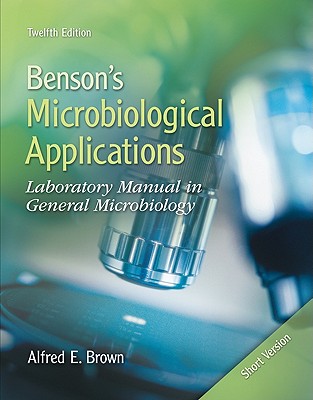
Microbiological Applications Lab Manual PDF
قراءة و تحميل كتاب Microbiological Applications Lab Manual PDF مجانا
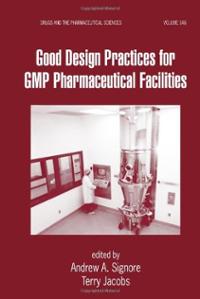
Good Design Practices for GMP Pharmaceutical Facilities PDF
قراءة و تحميل كتاب Good Design Practices for GMP Pharmaceutical Facilities PDF مجانا
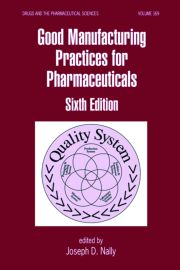
Good Manufacturing Practices for Pharmaceuticals, Sixth Edition PDF
قراءة و تحميل كتاب Good Manufacturing Practices for Pharmaceuticals, Sixth Edition PDF مجانا
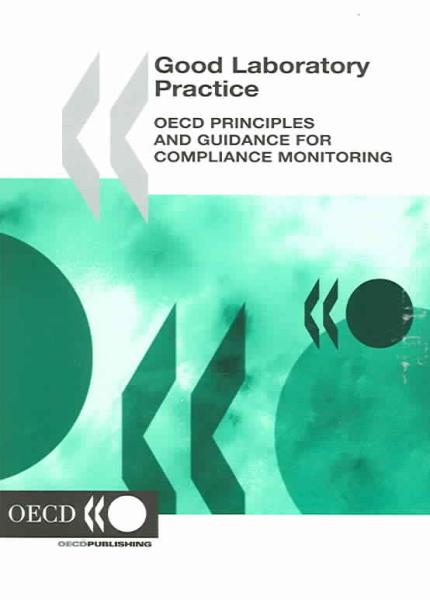
Good Laboratory Practice OECD Principles And Guidelines for Compliance Monitoring PDF
قراءة و تحميل كتاب Good Laboratory Practice OECD Principles And Guidelines for Compliance Monitoring PDF مجانا



